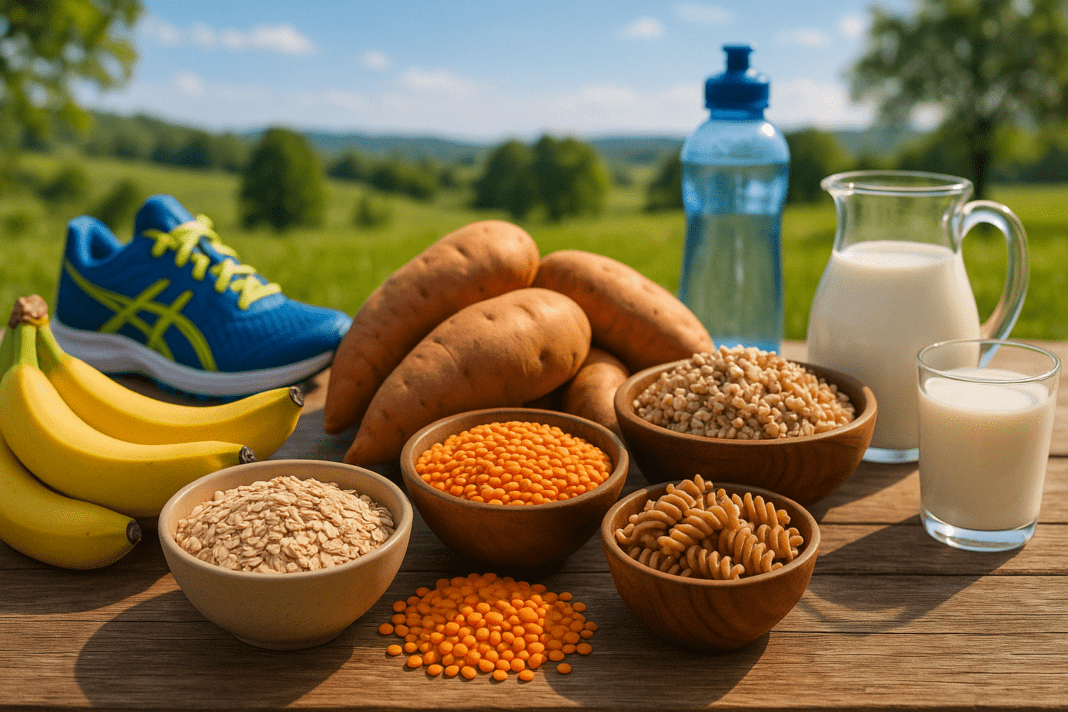In the pursuit of optimal health and performance, one concept that often escapes the spotlight is glycogen—our body’s internal reservoir of quick energy. While carbohydrates and protein are well-established pillars of nutrition, understanding how certain foods directly influence glycogen storage can unlock significant benefits for energy regulation, muscle recovery, and athletic performance. For those engaged in consistent physical activity, experiencing fatigue, or simply striving to maintain metabolic balance, knowing which glycogen-rich foods to include in your diet can be a game changer. Whether you’re preparing for a marathon, recovering from an intense gym session, or managing energy crashes in daily life, strategically incorporating foods that have glycogen-enhancing properties is scientifically sound and practically beneficial.
You may also like: Best Foods for Cognitive Function: What Science Reveals About Brain Nourishment, Focus, and Mental Clarity
Glycogen is the storage form of glucose, primarily housed in skeletal muscles and the liver. It serves as a ready-to-use fuel source, especially during high-intensity activity or periods of fasting. Our capacity to store glycogen is limited, which makes diet an essential factor in maintaining and replenishing this vital energy source. Unlike glucose circulating in the bloodstream, glycogen operates behind the scenes—its effects are not immediately visible but are profoundly felt in sustained energy output and efficient post-exercise recovery. In this article, we explore the top glycogen high foods, delve into the science behind how they work, and offer practical guidance for making them part of a daily wellness strategy rooted in both performance and nourishment.

Understanding Glycogen and Its Role in the Human Body
Glycogen is a highly branched polysaccharide composed of glucose molecules, stored predominantly in muscle and liver tissues. In muscles, glycogen provides fuel for contraction during physical activity, while liver glycogen helps maintain blood glucose levels between meals and during overnight fasting. The human body stores about 100 grams of glycogen in the liver and approximately 400 grams in skeletal muscle, although these values can vary based on body size, fitness level, and nutritional status.
During physical exertion, especially high-intensity or endurance workouts, muscle glycogen is rapidly broken down to meet the increased energy demand. Once depleted, fatigue sets in, and performance suffers. Similarly, liver glycogen plays a critical role in maintaining glucose availability for the brain and other vital organs. Without adequate glycogen stores, cognitive function can decline, and metabolic processes may become less efficient. For athletes and physically active individuals, maintaining robust glycogen levels is crucial for sustaining performance and avoiding post-exercise burnout.
Glycogen synthesis, known as glycogenesis, occurs when there is a surplus of glucose in the bloodstream, typically following a carbohydrate-rich meal. Insulin facilitates the uptake of glucose into cells and promotes its conversion into glycogen. Conversely, when glucose levels fall, glucagon and epinephrine stimulate glycogenolysis, breaking down glycogen to release glucose back into circulation. This dynamic interplay highlights the importance of dietary carbohydrate quality and timing in supporting glycogen metabolism.
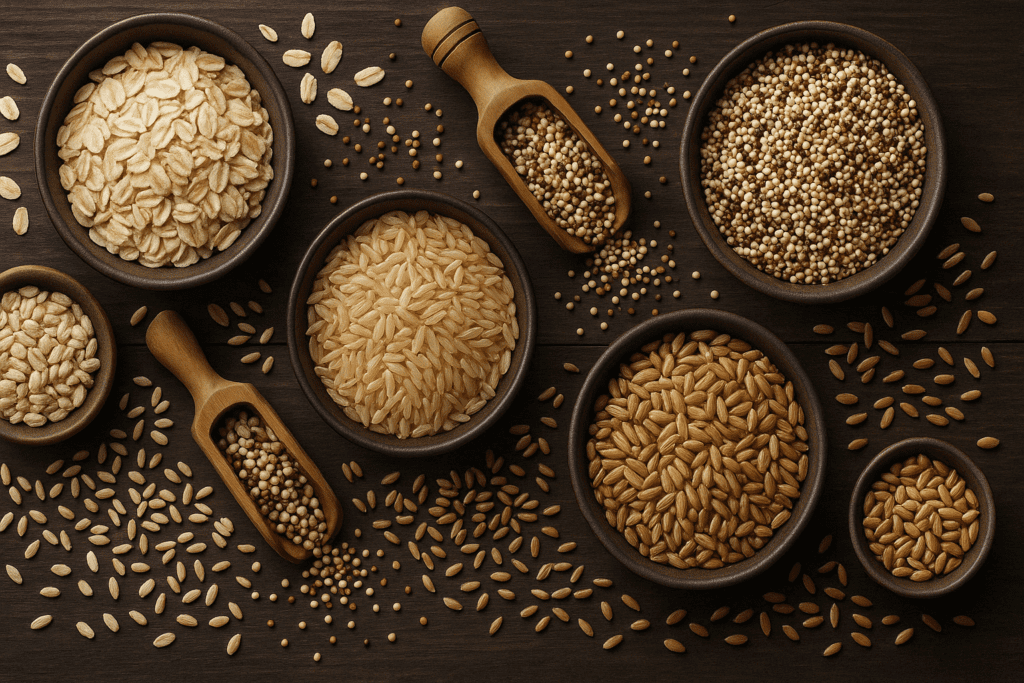
How Glycogen-Rich Foods Impact Energy and Recovery
Consuming glycogen foods is essential not only for athletes but for anyone who experiences energy fluctuations, cognitive fatigue, or muscle soreness. Foods that have glycogen-enhancing effects generally contain complex carbohydrates, moderate to high glycemic indices, and, in some cases, specific amino acids or micronutrients that support carbohydrate metabolism. These foods can increase glycogen synthesis, expedite post-exercise muscle repair, and prevent the “crash” often associated with inadequate glucose availability.
Post-workout nutrition is a critical window for glycogen replenishment. During the first 30 to 60 minutes after intense exercise, muscle cells are more sensitive to insulin, making them particularly efficient at absorbing glucose and synthesizing glycogen. Including glycogen high foods in this window can significantly improve muscle recovery, reduce inflammation, and prepare the body for future activity. Even for those not engaged in structured exercise, consuming the right carbohydrates throughout the day helps stabilize blood sugar, enhance cognitive performance, and support metabolic flexibility.
The glycemic index (GI) and glycemic load (GL) of a food can influence its impact on glycogen storage. High-GI foods cause rapid spikes in blood glucose and insulin, which can accelerate glycogen synthesis in post-exercise states. On the other hand, low-GI foods provide sustained energy and may support glycogen conservation during prolonged activity. A strategic combination of both types, tailored to individual needs and timing, ensures optimal energy regulation.
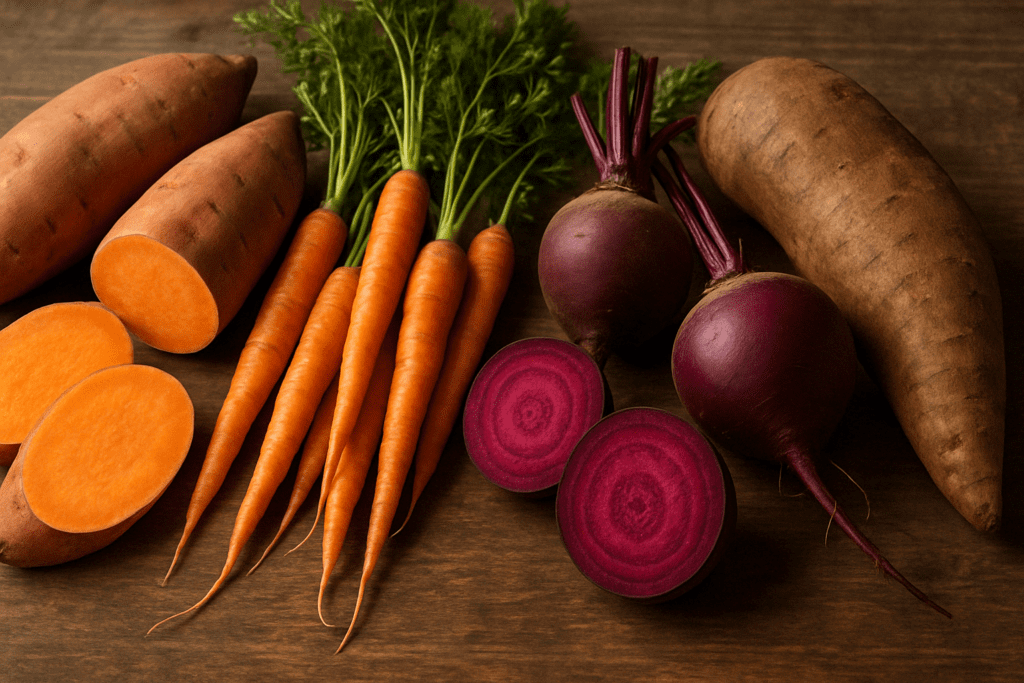
Whole Grains: A Foundation for Long-Lasting Glycogen Storage
Whole grains are among the most effective glycogen foods due to their complex carbohydrate content and fiber-rich composition. Brown rice, quinoa, oats, barley, and whole wheat provide a steady release of glucose into the bloodstream, promoting gradual and sustained glycogen storage. Unlike refined grains, which cause sharp spikes and rapid drops in blood sugar, whole grains offer metabolic stability and enhance insulin sensitivity—two factors that support efficient glycogen synthesis.
Oats, in particular, are an excellent pre- and post-workout food. They contain beta-glucan, a type of soluble fiber that helps regulate glucose absorption and improve cholesterol profiles. When consumed with a source of protein, such as Greek yogurt or eggs, oats become a powerful recovery meal that supports muscle repair and replenishes glycogen simultaneously. Similarly, quinoa not only delivers carbohydrates but also all nine essential amino acids, making it a complete protein—a rare trait among plant-based foods.
For those managing blood sugar levels, whole grains offer a balance between fueling glycogen synthesis and preventing reactive hypoglycemia. The magnesium and B vitamins found in whole grains also contribute to energy metabolism and neuromuscular function. Incorporating a diverse array of whole grains ensures a broad spectrum of nutrients that synergize with carbohydrate metabolism and enhance overall metabolic health.
Root Vegetables and Starchy Tubers: Natural Carbohydrate Powerhouses
Sweet potatoes, yams, beets, carrots, and other starchy root vegetables are naturally rich in carbohydrates and ideal for refilling glycogen stores. These foods are often overlooked in favor of grains but offer unique phytonutrients and antioxidants that support recovery and reduce oxidative stress associated with exercise. Sweet potatoes, for instance, are not only a source of complex carbohydrates but also provide potassium, vitamin C, and beta-carotene—all of which play roles in muscle function and immune resilience.
Beets are particularly interesting due to their high nitrate content, which has been shown to improve blood flow and exercise efficiency. While not typically thought of as glycogen foods, their contribution to overall energy availability and performance enhancement is well supported by emerging research. When combined with a carbohydrate-rich meal, beets may enhance glycogen storage indirectly by improving muscle oxygenation and reducing post-exercise fatigue.
Yams and taro root, common in many traditional diets, offer similar benefits. Their moderate glycemic index makes them suitable for both immediate and sustained energy needs, depending on preparation. Roasting, boiling, or mashing these tubers with a small amount of healthy fat, such as olive oil or avocado, can improve nutrient absorption and make them a satisfying addition to recovery meals.
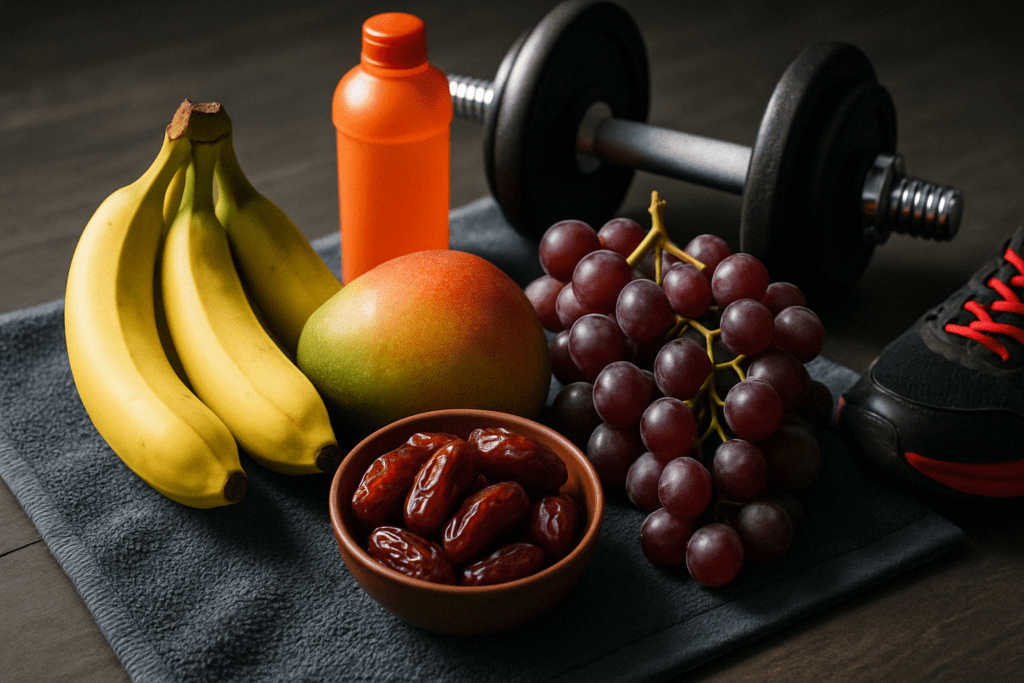
Fruits as Fast-Acting Glycogen Replenishers
Fruits, particularly those high in natural sugars like bananas, dates, grapes, and mangoes, are fast-acting glycogen high foods that are ideal for immediate energy needs and rapid post-exercise recovery. Because fruit sugars (primarily fructose and glucose) are quickly absorbed, they can replenish liver glycogen rapidly—a key factor in maintaining blood glucose stability between meals or during prolonged activity.
Bananas are a favorite among athletes for good reason. Their combination of glucose, potassium, and vitamin B6 supports muscle function, nerve transmission, and carbohydrate metabolism. Dates, which are nearly 70% carbohydrate by weight, provide an ideal natural alternative to synthetic energy gels. Their fiber and micronutrient profile also make them less likely to cause digestive distress, a common concern with commercial energy products.
While fructose is metabolized differently from glucose, it still plays an essential role in replenishing liver glycogen. For optimal recovery, pairing fruit with a protein source—such as a smoothie with whey protein or a bowl of cottage cheese and berries—enhances glycogen synthesis and muscle repair simultaneously. Fruits are also rich in polyphenols and vitamin C, which help reduce inflammation and oxidative stress following intense exertion.
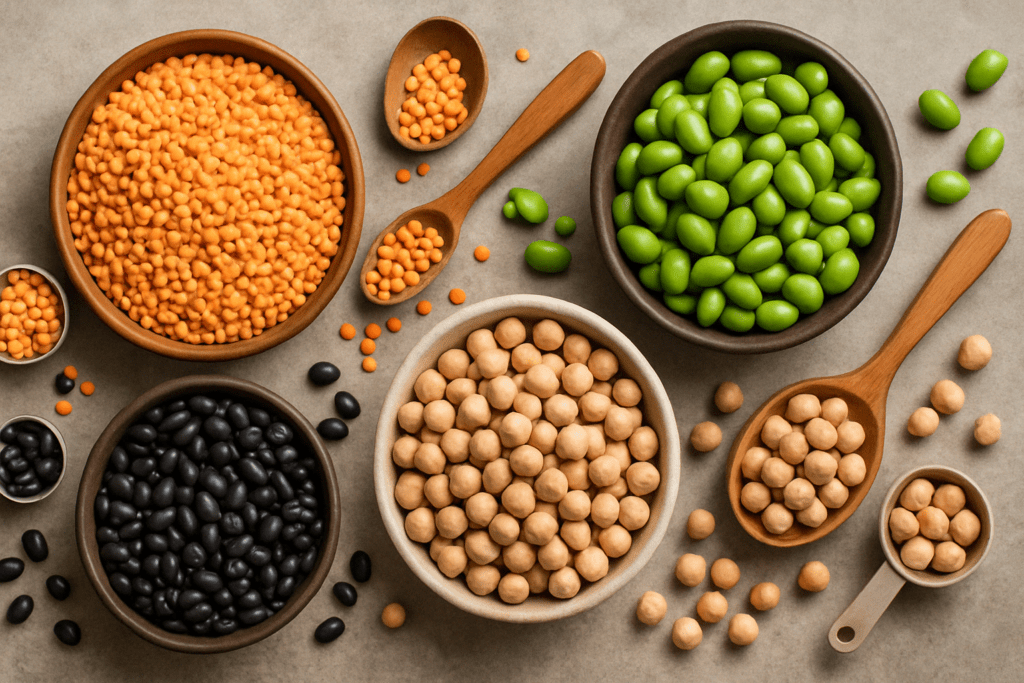
Legumes and Pulses: Balanced Sources of Carbohydrates and Protein
Legumes such as lentils, chickpeas, black beans, and soybeans are unique among glycogen foods in that they offer both complex carbohydrates and high-quality plant-based protein. This combination is ideal for muscle recovery, as it promotes both glycogen replenishment and tissue repair. Additionally, legumes contain soluble fiber, iron, and magnesium, which further support metabolic health and energy production.
For individuals following plant-based diets, legumes serve as a cornerstone of energy nutrition. Their low to moderate glycemic index means they release glucose steadily, minimizing insulin spikes while maximizing glycogen storage efficiency. This makes them especially valuable for endurance athletes or those managing blood sugar fluctuations, such as in reactive hypoglycemia or insulin sensitivity concerns.
Soy-based foods like edamame and tempeh also provide isoflavones—compounds with antioxidant properties that may reduce exercise-induced inflammation. Including legumes in post-workout meals, such as a lentil curry with brown rice or a bean salad with sweet potatoes, offers a well-rounded approach to replenishing energy stores and supporting muscle recovery through multiple pathways.
Dairy and Fermented Foods: Hidden Allies in Glycogen Replenishment
While not typically categorized under glycogen foods, dairy products like milk, yogurt, and kefir offer a unique combination of lactose (a naturally occurring sugar), high-quality protein, and electrolytes. This trio makes dairy an effective post-exercise option for glycogen resynthesis, especially when consumed shortly after activity. Chocolate milk, for example, has gained popularity among athletes as a recovery drink due to its ideal carbohydrate-to-protein ratio.
Fermented dairy products such as Greek yogurt and kefir also contain probiotics, which support gut health and nutrient absorption—factors indirectly involved in energy metabolism. When the digestive system functions optimally, nutrient uptake is enhanced, and glycogen synthesis becomes more efficient. The calcium and phosphorus found in dairy additionally support muscle contraction and skeletal integrity, important for long-term physical performance.
For lactose-sensitive individuals, lactose-free options or plant-based milk alternatives fortified with calcium and vitamin D can offer similar benefits. The goal is to choose products with natural or added carbohydrate content that can contribute meaningfully to glycogen storage while also supporting hydration and recovery.
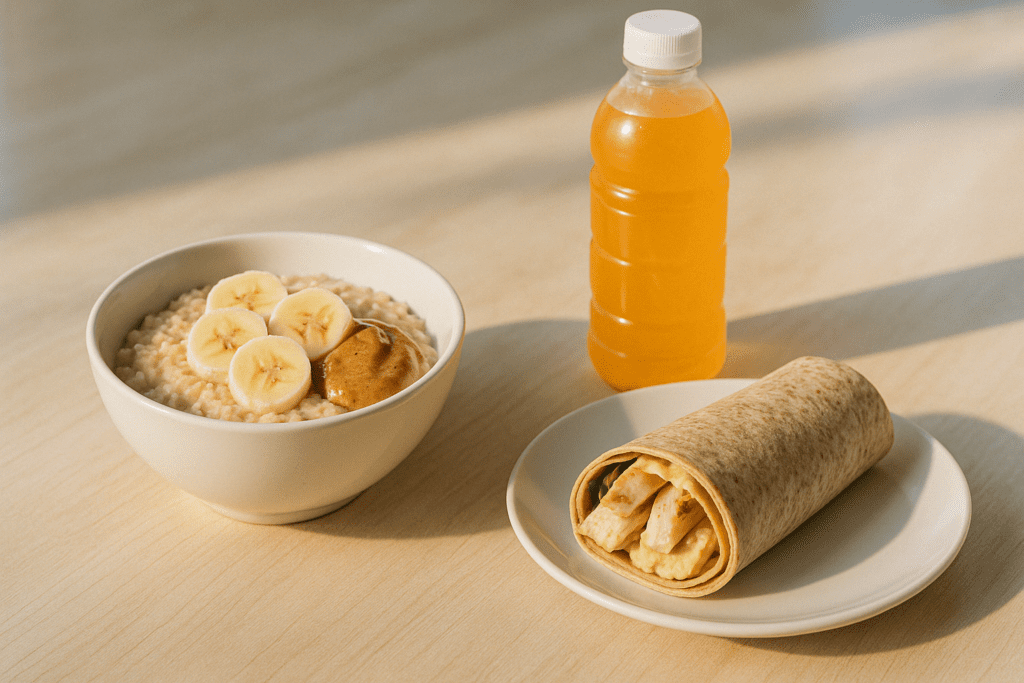
Timing and Pairing: Maximizing the Benefits of Glycogen Foods
Timing is critical when it comes to glycogen restoration. The post-exercise window—often referred to as the “anabolic window”—is when muscles are most receptive to nutrient uptake. Consuming glycogen high foods during this time accelerates recovery and reduces muscle soreness. Combining carbohydrates with protein in a ratio of approximately 3:1 or 4:1 further enhances glycogen synthesis by stimulating insulin release and increasing amino acid transport into cells.
For example, a bowl of oatmeal with almond butter and sliced banana or a whole-grain wrap with grilled chicken and hummus can provide a balanced mix of macronutrients that promotes both energy restoration and muscle repair. On rest days, lower glycemic foods such as legumes and whole grains may be more appropriate to maintain steady blood glucose and avoid overloading energy reserves.
Hydration also plays a role in glycogen storage. Each gram of glycogen is stored with approximately three grams of water. Dehydration can impair glycogen synthesis, which is why recovery meals should be accompanied by adequate fluid intake, preferably with electrolytes to restore what was lost during sweat. Coconut water, herbal teas, and mineral-rich broths can all support this process.
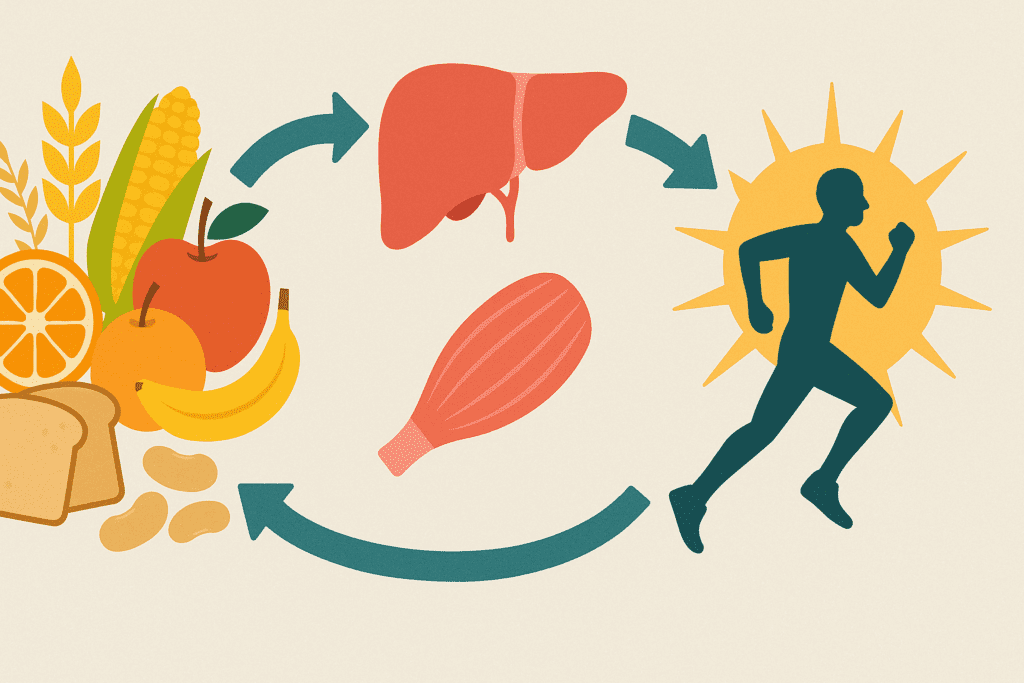
The Long-Term Metabolic Benefits of Glycogen Optimization
While glycogen is often associated with short-term energy needs, maintaining optimal glycogen stores also supports long-term metabolic health. Chronic glycogen depletion, whether from under-eating carbohydrates or excessive physical stress, can lead to hormonal imbalances, impaired immune function, and reduced thyroid activity. Conversely, a diet that includes foods that have glycogen-supportive properties fosters hormonal resilience, cognitive stability, and sustained energy output.
In metabolic conditions such as prediabetes or polycystic ovary syndrome (PCOS), regulating glycogen storage through targeted carbohydrate intake can help stabilize insulin levels and improve glucose tolerance. The key lies not in eliminating carbohydrates but in choosing those that are nutrient-dense and timed strategically around physical activity. This approach aligns with current scientific understanding of metabolic flexibility—the ability of the body to switch between fuel sources efficiently.
Moreover, optimizing glycogen stores enhances mental clarity, as the brain relies on a constant supply of glucose. When liver glycogen is sufficient, blood glucose remains stable, reducing the likelihood of brain fog, irritability, or mood swings. For students, professionals, and anyone with high cognitive demands, maintaining adequate glycogen through thoughtful nutrition can enhance productivity and mental stamina.
Frequently Asked Questions (FAQ) on Glycogen and Related Foods
- What are some examples of foods that have glycogen, and how can they contribute to energy levels? Foods that have glycogen include animal products like liver, pork, and chicken, as well as certain fish such as salmon. These foods serve as vital sources of energy since glycogen is a stored form of glucose that the body uses during periods of physical activity or stress. Glycogen high foods, such as lean meats and eggs, can provide a steady release of energy. Including these foods in your diet helps maintain blood glucose levels, ensuring consistent energy throughout the day. Additionally, glycogen plays an essential role in muscle function, which is why athletes often prioritize glycogen-rich meals after intense workouts.
- Can plant-based diets provide adequate glycogen sources for vegetarians or vegans? Vegetarians and vegans can certainly maintain adequate glycogen levels, although plant-based foods don’t store glycogen as efficiently as animal products. However, carbohydrates from fruits, vegetables, and legumes can still help replenish glycogen stores. Foods like sweet potatoes, quinoa, and oats are excellent plant-based sources for building and replenishing glycogen. While glycogen high foods in the plant kingdom aren’t as abundant as in meat products, they are still essential for maintaining the body’s glycogen reserves, especially for individuals engaging in regular exercise or endurance activities.
- How does glycogen storage impact athletic performance? Glycogen storage plays a crucial role in athletic performance, especially in endurance sports. Glycogen is stored in the muscles and liver, serving as the body’s immediate energy source during exercise. Consuming glycogen high foods, such as potatoes, rice, and certain fruits, before and after exercise helps athletes replenish these stores. This can delay fatigue, improve stamina, and enhance overall performance. Proper glycogen levels can also reduce the risk of “hitting the wall” during long-distance events, such as marathons, where muscle energy reserves are essential.
- What role do glycogen foods play in muscle recovery? After intense physical activity, replenishing glycogen stores is essential for muscle recovery. Glycogen high foods, including whole grains and legumes, help rebuild these stores, allowing the body to recover and rebuild muscle tissue more efficiently. Consuming carbohydrates that convert to glycogen after exercise promotes faster recovery times, reduces muscle soreness, and replenishes energy reserves for the next workout. Additionally, pairing these foods with protein can aid muscle repair, ensuring that the body has the nutrients needed for optimal recovery and performance.
- Are there any risks associated with consuming too many glycogen high foods? While glycogen high foods are essential for energy, consuming them in excessive amounts can lead to increased fat storage, particularly if not used for energy. When glycogen stores are already full, excess carbohydrates are converted into fat and stored in the body. This can contribute to weight gain over time, particularly in individuals who lead sedentary lifestyles or do not engage in regular physical activity. Moderation is key, and focusing on the quality of carbohydrates—opting for whole grains, legumes, and vegetables—is important for maintaining a healthy balance.
- How does the body’s glycogen use differ between short bursts of exercise versus prolonged endurance activity? During short bursts of high-intensity exercise, such as sprinting, the body relies heavily on stored glycogen from muscles to quickly generate energy. Glycogen foods that provide quick-release energy, like bananas or whole grains, are ideal for fueling these activities. However, during prolonged endurance activities, the body taps into both muscle and liver glycogen stores, which are gradually depleted over time. In these cases, consuming glycogen high foods before and during the activity helps maintain energy levels, preventing fatigue and improving endurance. Strategies such as carb-loading can also enhance glycogen storage for athletes preparing for long events.
- What are the differences between glycogen storage in muscles and the liver? Glycogen is stored in both the muscles and the liver, but the purposes differ. Muscle glycogen is primarily used to fuel physical activity and support muscle function during exercise. Liver glycogen, on the other hand, helps maintain blood sugar levels by releasing glucose when needed. Foods that have glycogen, like lean meats, help replenish both muscle and liver stores. It’s important to balance the intake of glycogen high foods to ensure that both reserves are adequately replenished, particularly after prolonged or intense physical exertion.
- Are there any foods that hinder glycogen storage or usage? Certain foods can interfere with glycogen storage or usage, particularly those that cause blood sugar spikes or crashes. Highly processed foods high in refined sugars can lead to insulin resistance, reducing the body’s ability to store glycogen effectively. Additionally, excessive consumption of alcohol can impair glycogen synthesis, limiting the body’s ability to recover from exercise. To optimize glycogen storage, it’s important to prioritize whole foods like brown rice, oats, and legumes, which provide steady energy without the negative effects of refined sugars and alcohol.
- How can one balance glycogen high foods with other macronutrients in their diet? A well-rounded diet includes not only glycogen high foods but also a balanced intake of protein and healthy fats. Protein is essential for muscle repair and growth, while fats provide long-term energy and support cell function. Combining glycogen foods with lean protein sources (like chicken or tofu) and healthy fats (such as avocado or nuts) helps stabilize blood sugar levels, preventing energy spikes and crashes. A balanced meal could include quinoa, a glycogen-rich food, paired with salmon for protein and a side of leafy greens for added nutrients.
- Can people with diabetes consume glycogen high foods? People with diabetes need to be cautious when consuming glycogen high foods, as they directly affect blood sugar levels. However, they can still enjoy these foods in moderation by pairing them with protein or fats to slow the absorption of glucose. Foods like whole grains, legumes, and sweet potatoes, which have a lower glycemic index, are better options for maintaining balanced blood sugar levels. It’s also important to monitor carbohydrate intake and adjust insulin accordingly, ensuring that glycogen high foods support overall health without causing blood sugar spikes.
Conclusion: Harnessing the Power of Glycogen Foods for Optimal Energy and Recovery
Understanding the science and application of glycogen-rich foods is essential for anyone seeking to enhance their energy, optimize recovery, and support overall metabolic resilience. These foods—ranging from whole grains and root vegetables to fruits, legumes, and select dairy options—offer more than just calories; they serve as strategic fuel sources that support both physical performance and long-term health. By choosing foods that have glycogen-boosting potential and pairing them wisely with proteins, fluids, and timing strategies, individuals can experience noticeable improvements in endurance, mental focus, and muscle recovery.
Glycogen high foods are not merely the domain of athletes—they are relevant for anyone navigating the demands of modern life. Whether you’re dealing with chronic fatigue, blood sugar fluctuations, or performance plateaus, the solution may lie in understanding and supporting your body’s glycogen needs. By adopting a science-informed approach to carbohydrate intake, you can empower your metabolism, improve recovery outcomes, and enjoy more consistent, sustainable energy throughout the day. As research continues to explore the intricate relationship between nutrition and performance, one truth remains clear: fueling your glycogen stores is not only practical but profoundly powerful.
Was this article helpful? Don’t let it stop with you. Share it right now with someone who needs to see it—whether it’s a friend, a colleague, or your whole network. And if staying ahead on this topic matters to you, subscribe to this publication for the most up-to-date information. You’ll get the latest insights delivered straight to you—no searching, no missing out.
energy foods for workouts, glucose and muscle function, best post-exercise meals, carb timing for athletes, glucose replenishment tips, athletic recovery nutrition, complex carbs and muscle repair, metabolic recovery foods, diet for endurance athletes, foods for energy levels, glycogen and hydration, blood sugar balance through food, plant-based recovery meals, exercise and glucose metabolism, healthy carbs for energy, glucose uptake and insulin response, workout nutrition strategies, functional sports nutrition, natural carb sources for glycogen, best foods for sustained energy
Further Reading:
Fundamentals of glycogen metabolism for coaches and athletes
The 10 Best Muscle Recovery Foods and Drinks
30 muscle-building foods to fuel your goals
Disclaimer: The content published on Better Nutrition News (https://betternutritionnews.com) is for informational and educational purposes only. It is not intended as a substitute for professional medical advice, diagnosis, or treatment. Always seek the guidance of a qualified healthcare professional before making any changes to your diet, nutrition, or wellness practices. The opinions expressed by authors and contributors are their own and do not necessarily reflect those of Better Nutrition News.
Better Nutrition News and its affiliates make no representations or warranties regarding the accuracy, completeness, or reliability of the information provided. We disclaim all liability for any loss, injury, or damage resulting from the use or reliance on the content published on this site. External links are provided for reference purposes only and do not imply endorsement.


